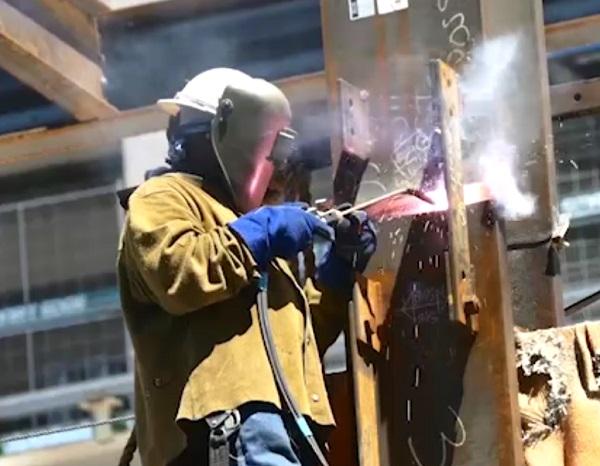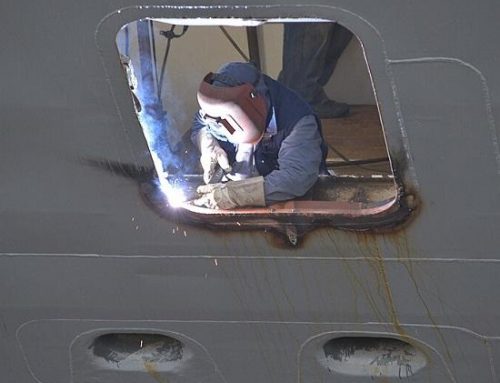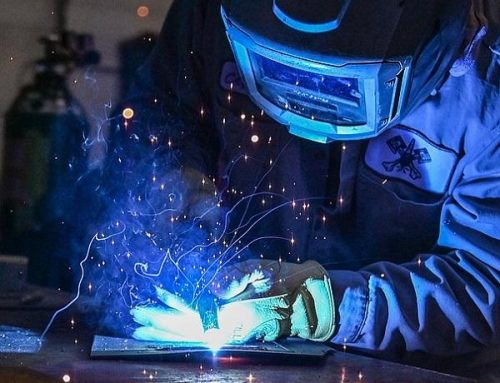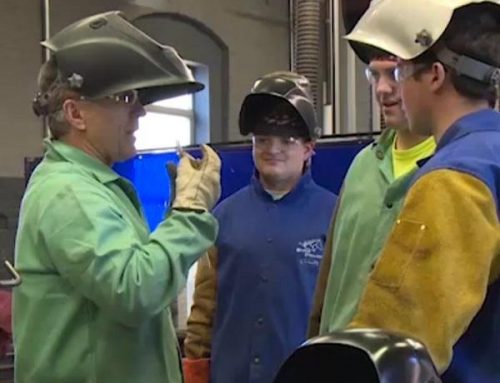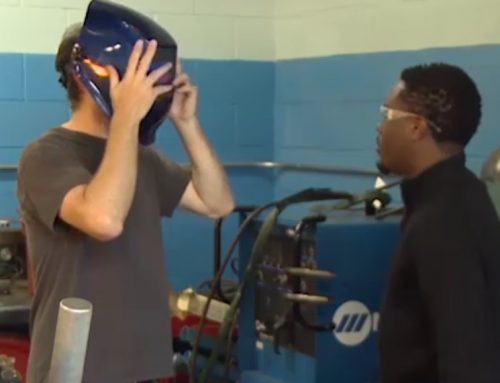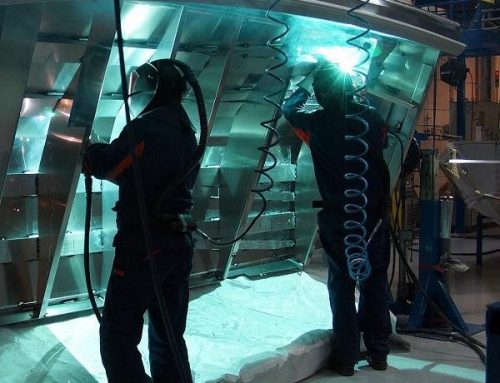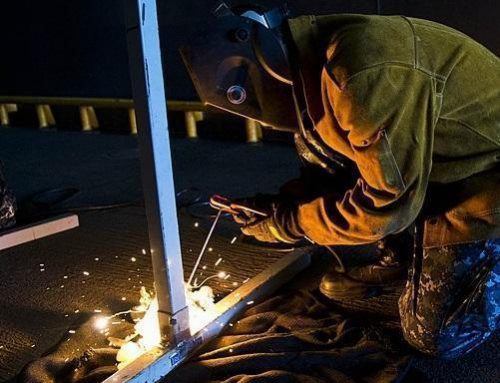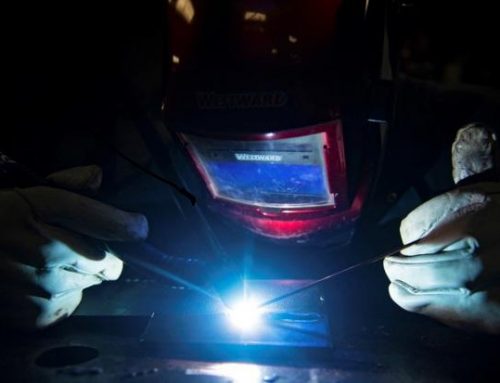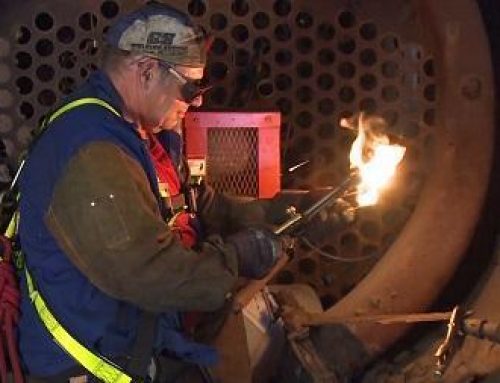Hot work activities like welding, cutting, brazing and soldering are a leading cause of industrial fires. This article explains how hot work permitting systems implemented by employers help control hazards and prevent catastrophic fires, injuries and fatalities. Industrial facilities rely on hot work like welding and metal cutting to maintain and repair equipment. However, these activities also introduce major fire risks. Simple sparks can ignite flammable materials and turn a routine maintenance job into a raging inferno.
Implementing hot work safety procedures and permitting systems is critical to controlling hazards. This article provides an overview of key information covered in the online safety training course “Hot Work Safety and the Permitting Process.” It explains what hot work is, why it is hazardous, and how permitting procedures reduce risks.
What is Hot Work?
Hot work refers to any process or activity that generates high heat, open flames or sparks that could potentially ignite flammable materials. Common examples include:
- Welding, cutting, brazing, and soldering
- Operating propane or gas torches
- Using heat guns for shrink wrapping or paint removal
- Chipping, grinding, drilling or sawing certain materials
The extreme heat produced by these processes can reach over 1,000°F. Sparks and slag can spray 30 feet or more from the work area. This is more than enough heat to ignite common materials like wood, paper, cardboard, textiles, grease, oil and flammable gases or vapors.
In addition to ignition risks, hot work equipment itself poses hazards. Welding rigs and arc welding machines can leak, overheat or produce sparks. Damaged power tools are another source of sparks that can start fires.
Hazards of Hot Work Fires and Explosions
The potential consequences of a fire or explosion caused by hot work demonstrate why safety is paramount. Data shows:
- Fires initiated by hot work cause over $300 million in property damage per year.
- Hot work fires result in more than 30 worker deaths annually.
- One in five industrial fires are started by hot work activities.
Workers performing hot work may be severely burned or killed. Nearby employees may be injured by smoke inhalation. Toxic fumes can spread through ventilation systems and threaten facility-wide evacuations. Explosions can destroy entire buildings and production lines.
Implementing Hot Work Permitting Systems
To mitigate risks, many companies designate specific areas where hot work can be conducted safely. These locations are designed to be fire-safe at all times.
However, hot work often must be performed outside of designated areas, such as:
- Construction sites
- Vessels and equipment that cannot be moved
- Pipes that cannot be isolated
OSHA requires employers to implement hot work permitting procedures for these temporary or remote work areas. Permitting ensures hazardous locations are made fire-safe prior to work beginning.
The Hot Work Permit Process
Hot work permitting is based on guidelines from the National Fire Protection Association (NFPA). Permits must be completed and authorized before hot work begins. This written system manages hot work safely by:
- Identifying potential fire hazards
- Determining proper precautions to control risks
- Ensuring accountability for safety compliance
The permitting process centers around a written Hot Work Permit. Permits are completed individually for each hot work task, describing:
- The specific work to be done
- The exact location
- The time frame covered
The Permit Authorizing Individual
A manager known as the Permit Authorizing Individual (PAI) oversees the permitting process. The PAI:
- Inspects the proposed work area thoroughly.
- Identifies potential hazards using the permit checklist.
- Specifies precautions needed to control risks.
- Verifies required precautions are taken before signing the permit.
- Checks completed work and cancels permits.
This individual is directly responsible for authorizing hot work and ensuring compliance with fire safety regulations.
Making the Area Fire-Safe
The Hot Work Permit checklist guides the PAI in determining necessary precautions for the location. Common requirements include:
- Moving combustibles at least 35 feet away or protecting them with welding screens or fire blankets.
- Covering or sealing floor and wall openings within 35 feet.
- Wetting down combustible floors, walls and ceilings within 35 feet.
- Sweeping floors clean of combustible debris.
- Testing that fire suppression systems are functioning.
- Prohibiting flammable liquids, dusts or residues on the materials or equipment involved.
All hot work equipment must also be inspected and confirmed in good operating condition prior to starting work.
The permit checklist allows workers to methodically address each potential hazard identified by the PAI. Only once all precautions are taken can the PAI certify the area is fire-safe by signing the permit.
Performing Hot Work Safely
With the permit in hand, the hot work operator and fire watch personnel can proceed, following permit guidelines to:
- Maintain fire-safe conditions as work is performed.
- Stop work and request a new permit if conditions change.
- Conclude operations safely.
- Ensure the work area is protected for at least 30 minutes after hot work ceases since fires may smolder undetected.
Upon completion, the PAI performs a final inspection of the area and finished work. If satisfied no hazards remain, they cancel the permit, documenting that the hot work was concluded safely.
The entire permit is kept on file, allowing the PAI to analyze completed permits and identify improvements to the hot work program.
Hot Work in Confined Spaces
Performing hot work inside confined spaces requires additional precautions. Confined spaces are restricted enclosures like tanks, vaults, and manholes that are difficult to access or exit.
Hazards already typically found in confined spaces include:
- Toxic or flammable gases
- Explosive atmospheres
- Engulfing particulate matter
- Machinery entanglement
Introducing hot work activities into this setting adds ignition risks for fires and explosions. All precautions required for hot work permits plus rigorous confined space entry procedures must be followed.
Performing any work in confined spaces requires specialized training to recognize, evaluate and control serious hazards. Consult supervisors for complete confined space procedures before undertaking hot work in these dangerous settings.
Summary
Hot work is essential for construction, maintenance and repairs, but also introduces major hazards if not performed safely. Implementing hot work permitting procedures enables organizations to:
- Identify potential fire risks before work ever begins.
- Take specific precautions appropriate to the work area to control those risks.
- Ensure compliance with fire prevention standards.
- Document that safe conditions were maintained throughout the job.
While hot work does require diligence, employers who institute thorough permitting systems can help prevent catastrophic fires, explosions, injuries and deaths.
You’ve just immersed yourself in the complexities of hot work safety, understanding the real risks that lurk behind every spark and flame. From the role of a Permit Authorizing Individual to the intricacies of confined spaces, you’ve seen how multi-faceted this issue is. You know that permit systems are essential, but perhaps you’re asking, “Is there a way to make this process even more effective? How can I ensure that every team member is equipped with the knowledge and skills they need to make the best decisions in the heat of the moment?” The answer is closer than you think and could be the game-changer your organization needs.
Stop Playing with Fire! Secure Your Workplace NOW with Our Breakthrough Hot Work Safety Course – Before It’s Too Late!
One in Five Industrial Fires Are Caused by Hot Work—Learn How to Prevent Disasters, Save Lives, and Protect Your Bottom Line
Attention all safety managers and business owners! You already know the devastating impact hot work accidents can have. We’re talking over $300 million in property damage and 30 precious lives lost every year. The real shocker? All of this is entirely preventable.
When it comes to hot work—any task involving flame or high heat—taking half-measures is a recipe for disaster. Maybe you’ve had a close call already, or perhaps you’re one step away from a costly mishap that could bring operations to a grinding halt. It’s not just about the money; lives are on the line here.
Introducing “Our Hot Work Safety and the Permitting Process”—the ultimate safety net for your team. Forget generic safety videos; our full-length interactive courses dive deep into the complexities of hot work safety, transforming your workforce into safety pros.
Features:
Comprehensive Coverage: Understand hot work and its inherent risks.
Crucial Permitting: Master the permitting process to green-light only the safest operations.
Safety Protocols: Learn how to prepare the work area and perform hot work without a hitch.
Special Scenarios: Explore the challenges of hot work in confined spaces.
Our courses are available in both English and Spanish to ensure everyone is on the same page.
We can’t stress this enough: safety is not a drill. Your risk is real and so are the solutions we offer. Click here now to get a demo of our game-changing Online Training System.
P.S.
Don’t become another statistic. Secure your operations, save lives, and protect your investments by enrolling in “Our Hot Work Safety and the Permitting Process” today!


